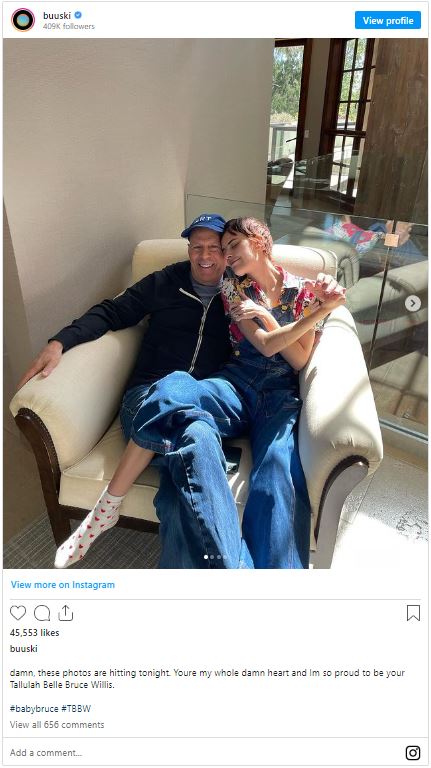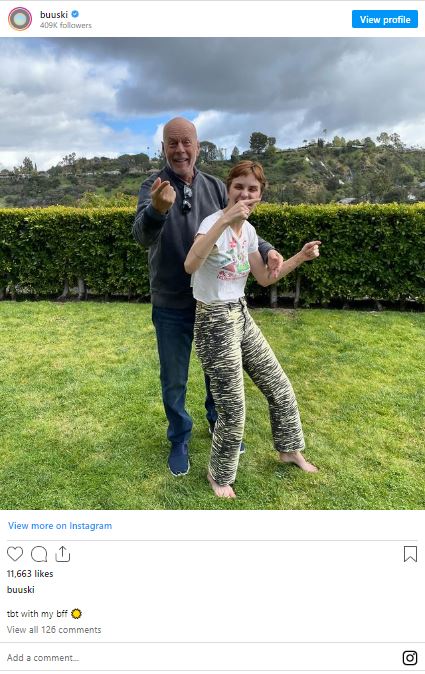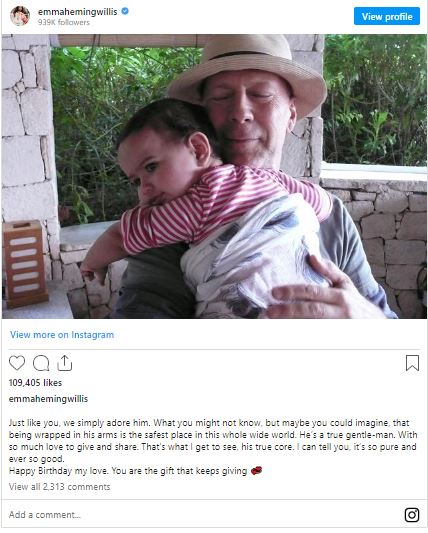Recently, the 30-year-old shared a sweet childhood moment of her dad carrying her on the red carpet, hinting that as an adult, she’d received a surprising diagnosis.
Keep reading to learn more about Tallulah’s condition!

An Instagram memory shared by Tallulah Willis turned into a conversation about autism.
Tallulah, the youngest of three girls shared by Bruce Willis, 69, and his ex-wife Demi Moore, 61, shared a clip that shows her as a child, repeatedly playing with her father’s head as he holds her in his arms while speaking with the media at a film premiere.

Inviting dialogue from her 408,000 followers, Tallulah captions the March 15th clip, “tell me your autistic without telling me your autistic [sic].”
Some users expressed love for the sweet moment in the clip, and others – familiar with the behaviors she displays – touched on her symptoms of autism along with her father’s loving reaction.
“The beautiful way he just wasn’t even phased by that and just continued to hold you. Your dad is one-of-a-kind honey, and so are you,” writes one netizen. A second shares, “In your defense, shaved heads are as relaxing as little Japanese sand zen gardens.”

A third cyber fans adds, “His care for your feelings is magic…I’m so happy you have moments captured in the vault of forever.”
One of the most popular comments comes from a psychologist who specializes in neurodivergent conditions.
“If you’re open to sharing, did you get diagnosed as a child?” The user, who goes by the name mfizzle, continues, “Not sure how much of your journey you’ve shared but would love to read more. You’re brave and inspiring and this is a very sweet video. All the best!”

Responding to this user’s question, Tallulah writes, “This is the first time I’ve ever publicly shared my diagnosis. Found out this summer and it’s changed my life.”
According to the Centers for Disease Control and Prevention (CDC), “Autism spectrum disorder (ASD) is a developmental disability caused by differences in the brain. People with ASD often have problems with social communication and interaction, and restricted or repetitive behaviors or interests.”